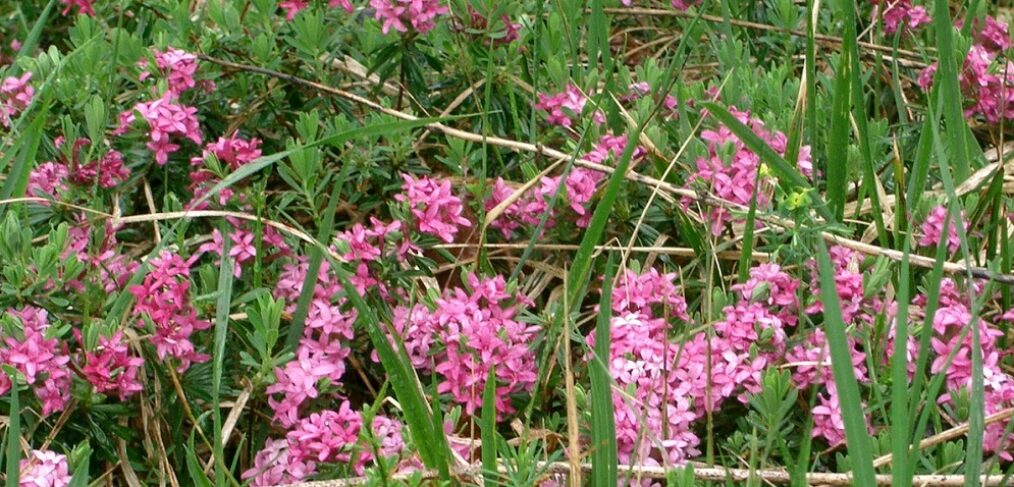
species of the week #29 – garland flower
The garland flower belongs to the daphne family. It has inspired some well-known songs and poems with its beautiful blossom. It is popular as a rock garden plant, but the wild form is unfortunately threatened with extinction.
| Distribution status | Threatened with extinction |
| Remaining deposits | Bavaria, Baden-Württemberg |
| Last sighting in Rhineland-Palatinate | 2012 in Ludwigswinkel |
| Habitat | Dry, lean, calcareous soils, light forests |
| Threat | eutrophication, islandization, scrub encroachment |
The garland flower grows to 40 cm high, its leaves are leathery and evergreen with a bluish underside. The pink flowers exude an intense scent. The berries are hairy and yellowish to red-brown. As so-called half light plant it grows under light treetops e.g. in pine forests or at forest edges.
The seeds of the garland flower are transported further by ants, therefore its ability to spread and adapt is very limited. Just as rare species like the broad-bordered bee hawk-moth use it as a nectar plant. Even in ancient times, heather florets were used as an emetic and laxative, but here, as so often, the dose determines the poison. Already 10-12 berries have a deadly effect. That is why the plant is no longer used for medicinal purposes today.
Air pollutants and intensive cultivation over-fertilise the barren soils on which the garland flower depends. The agricultural and forestry use of marginal sites destroys last retreats. Stabilization of these sites and small-scale networking are necessary to secure the garland flower and the species that depend on them in the long term.
Politically necessary:
– Promotion of open-air measures such as extensive grazing
– Preservation of marginal locations
– Containment of eutrophication
– Biotope cross-linking
to the other species of the week here
Picture: From PRA – Own work, CC BY 2.5, https://commons.wikimedia.org/w/index.php?curid=2083941
